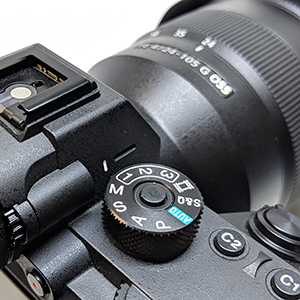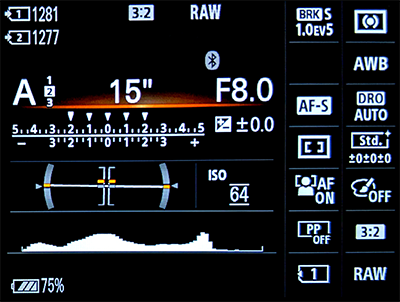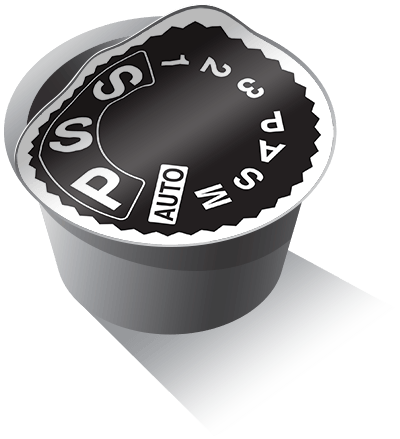How I Use Sony Camera Settings Memory

I really like the camera settings memory that my Sony a7RIII offers. Referred to in their documentation as “Camera Settings 1” and “Camera Settings 2,” this feature has saved me from mistakes more than once, so I want to tell you how it works and how I use it.
If you shoot with a Sony Alpha camera (a6000, a6500, a7II, a7III, a9), you probably have this feature. If you aren’t using it, allow me to tell you why you should!
What Is Settings Recall?
Settings Recall (or “Settings Memory”) is a feature in some (most?) Sony Alpha cameras that allows you to save camera settings and later recall them, as the name might imply.
From the Sony “Help Guide”:
Allows you to register up to 3 often-used modes or product settings to the product and up to 4 (M1 through M4) to the memory card. You can recall the settings using just the mode dial.
There are two available “banks” of settings memory: in-camera memory and SD card storage. The saved settings “slots” are generally referred to as C1-C3, and the SD card settings “slots” are M1-M4.
In this article, I will only talk about C1-C3, because I haven’t yet figured out a reasonable use for saving camera settings onto an SD card. This might be useful to you if you have multiple Sony cameras whose settings recall are compatible, or if you have some other reason to “back up” some settings somewhere.
Note that if you format the SD card, the settings will be erased.
Why Is Settings Recall Awesome?
As you likely know by now, I shoot mostly landscape, cityscape, and architectural subjects. You may also know that photography is a serious hobby for me, but not my full-time gig. Yes, that’s right, I have a “normal job;” I’m not a full-time blogger and social media maven.
Because I shoot more occasionally, it’s easy for me to fall into the excitement of the moment when heading out to do some shooting, and forgetting that I left some camera setting at an unusual value. For example, I might go out for some city shooting during the day and not remember that I was previously out after dark shooting handheld at ISO 2,000.
Okay, I admit it, I should definitely work on becoming more disciplined about checking all of my settings, that’s kind of table stakes for being a photographer, right? Sure, but even if I do remember to check every important setting, it’s still annoying to change a bunch of them before I can get started with a shoot.
So for me, settings recall serves two purposes:
- It rescues me from being occasionally forgetful, and
- It makes it simple and fast to get back to a “baseline” of settings.
Great, so how does this all work? How do I use this to make my life easier?
How I Use Settings Recall
Right now, I use C1 and C2 to store my most frequently used “base settings” for the two shooting situations that I usually find myself in. For any other scenario, I “build” off of one of these two sets of settings.
Settings 1, “C1”
These are my essential, everyday, general handheld shooting settings.

As a basis, I love aperture priority mode, and then I have a pretty no-frills set of baseline settings:
- f/8
- ISO 100
- Single-shot drive mode
- Single-shot AF
- Center point AF
You can store much more than just basic shooting settings, though. In addition to these, I prefer a histogram and square grid overlay on my display, and it will reset many of the other settings I infrequently change, such as touch panel+pad (how the touch screen functions), and more.
Settings 2, “C2”
My second group of settings is geared toward sunrise/sunset tripod shooting, especially when I’m doing cityscapes and I want to get a lot of dynamic range out of an image with city lights and ambient light playing together.

Again, I prefer aperture priority mode, and then I have settings oriented toward tripod shooting:
- f/8
- ISO 64
- Single bracket (non-continuous), 1.0 EV stops, 5 shots
- Single-shot AF
- Center point AF
Similar to C1, I also select a specific display mode, in this case I like the display with the digital level, because it’s important to take a level shot for landscape and cityscape images (generally).
As you’ll notice, the settings are fairly similar between C1 and C2; I almost always use aperture priority mode unless I’m shooting with a manual lens like my Voigtlander Nokton Classic 50mm f/1.4, or my Venus Optics Laowa 14mm f/2.8 Zero-D; In those cases I shoot in manual mode, of course. I may alter the AF point setting in C2 because I find that I often change it to “flexible spot,” but for now it’s set to center point.
What this helps me do, more than anything else, is take what would be potentially a whole bunch of dial rotations and menu selections and turn it into one mode dial rotation and one press of the “select” button.
In less than five seconds, I am set up with my preferred settings for these two common situations that I find myself in. For this reason, I love Camera Settings Memory.
Why I Don’t Love Camera Settings Memory
There are reasons I think this system is flawed, and I suppose in any situation as complex as this one, a “perfect” solution may not exist. Certainly there may not be a single solution that satisfies everyone, but I think my observations here are not eccentric.
#1. Mixing physical and virtual settings is hard
I guess it’s cool that C1-C3 are on the physical mode dial. It’s also kind of confusing in a way. On the one hand, the mode is a setting that you can save, so it would be strange for the camera’s current mode to be different than the mode selected on the dial. For that reason, you need somewhere for the dial to sit when it could be P, A, S, or M.
Still, it always felt a little bit weird to me. When you rotate the dial onto the “1,” “2,” or “3,” it triggers an on-screen display of the saved settings (well, some of them), and prompts you to accept the settings (“Enter”), or select one of the other saved slots (the M1-M4 slots, only).
Of course, you don’t need to press “Enter” to apply the settings. They are already applied. If you depress the shutter, the screen returns to your shooting display and the settings are there, as you wanted. This is the main, recommended method (based on my reading of the Help Guide) to apply settings M1-M4. So again, your mode dial may be sitting on “1,” but you may be using settings retrieved from M2. You just have to know that.
Your actual mode, of course, will be whichever mode you saved to that setting slot. If you want the settings saved in C1, but with a different mode… Well, you can’t do that.
This odd combination of changing a mode with the physical dial and triggering a software interaction feels slightly off to me, but, this is the most trivial of my complaints.
#2. What is saved is… Hard to know
My biggest gripe with the system is that you can’t really know what is saved in one of these settings slots. It’s a lot of stuff, but I’m fairly certain that it doesn’t save every possible setting. So which settings does it save? I guess you’ll have to experiment to find out if the one you want to save actually gets saved.
I imagine a world where the menu system displays some tiny marker indicating whether the setting could be saved, or, even better, whether the setting is currently set to the value saved in the selected setting slot.
And then, again, because the dial can be used to recall settings saved on your SD card, there is also the possibility that the current settings were retrieved from somewhere other than the slot shown on the physical dial. I think Sony has to rethink this part of the interface entirely.
#3. The mode dial is kind of a mystery, seriously
Maybe this should have gone in #1, but I’m calling it out separately because to me it’s the most unintuitive aspect of this physical/virtual control scheme.
The mode dial on just about every other camera till now, most of which have been real, physical dials on DSLRs since the beginning, have selected the mode. That’s all. If you set it to “A,” you change the camera to aperture priority mode, and that’s it.
On these Sony Alpha cameras, because the C1-C3 dial positions recall a mountain of saved settings, they’ve overloaded the function of the other mode settings to also save settings, kind of.
I say “kind of,” because you aren’t choosing to save them, the camera is “remembering” what you had set when you were last in one of the traditional shooting modes.
Now, this makes sense in some cases, because you may not want all of the saved settings recalled from C1-C3 to persist when you change back to one of the traditional modes, and I suppose this is what Sony learned in their focus groups or decided on their own.
Where it gets fuzzy for me is that you have, effectively, four settings conditions. One of the recalled settings from C1-C3, and the settings implicitly saved for the traditional modes.
Whereas with a simpler DSLR, all of the settings you select simply stay the same until you change them, moving from one of the C1-C3 modes to a traditional mode will reset all of the settings (including all of the ones deep in the menus that you can’t readily see) to what they were the last time you used one of the traditional modes. Those settings do carry through between each of the traditional modes, though.
For example, if you change your ISO to 400 while in “A,” it will stay the same when you change to “S,” but if you recall C1, which sets your ISO to 100, change your ISO to 200, and then change back to “S,” the ISO will return to 400 as you selected while in “A” at the start.
This, for me, feels just ever so slightly incongruous. You just have to keep in mind that the “M,” “S,” “A,” and “P” modes share settings and implicitly remember them.
Most of the time it isn’t a big deal, but if you’re frequently recalling settings and changing modes, you’ll want to keep a keen eye on your important shooting settings.
Conclusions
Here we discussed how Camera Settings Memory works on the Sony Alpha line of cameras, and why I think it is a game changer for someone as forgetful as I am, who frequently shoots in two common scenarios with different basic settings requirements.
I really think that this feature is a “killer app” that other cameras are missing out on. Especially in this world where our cameras have in excess of 100 configurable settings (the a7RIII has 180 top-level settings entries, some of which lead to sub-menus), being able to meticulously pre-configure them the way you like and recall them in a couple of seconds is absolutely killer.
What do you think? Do you use this? Do you hate this? Please comment below!
 Single-Serving Photo
Single-Serving Photo
Comments